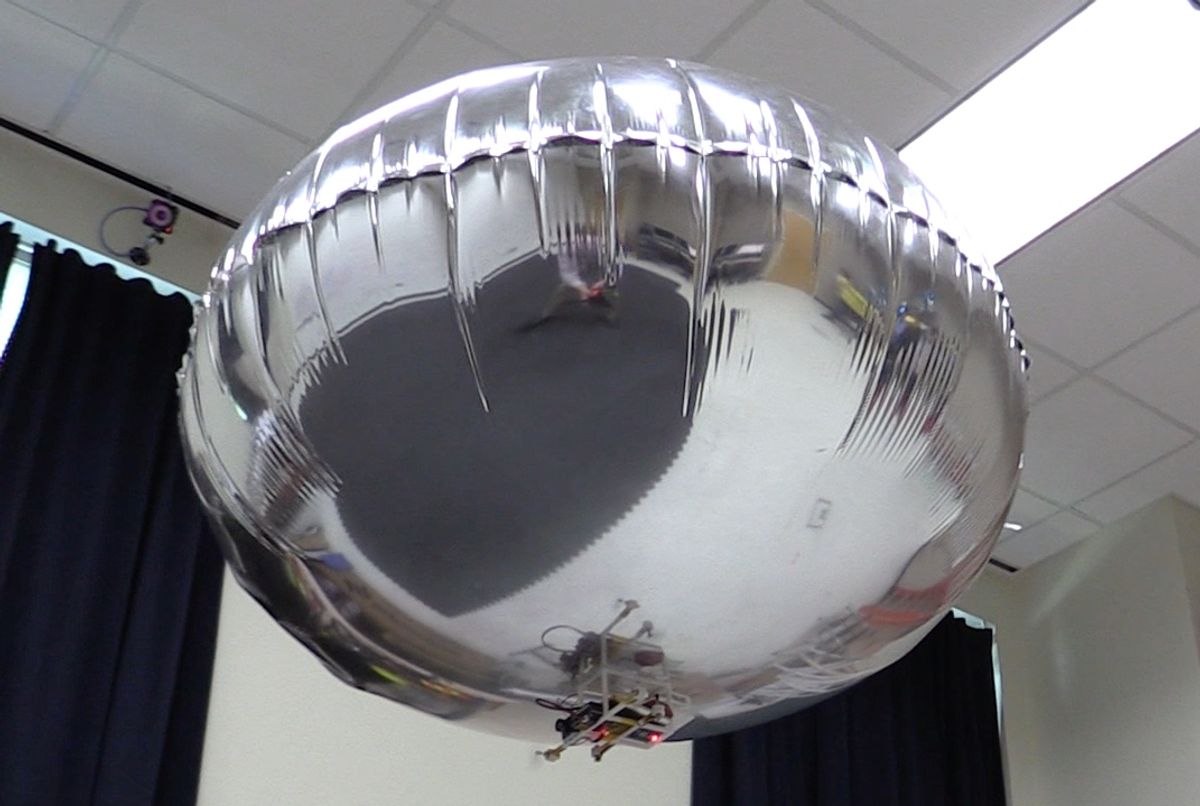Every time we go to a conference, we see flying robots that are getting smaller and more talented, capable of dynamically avoiding all sorts of obstacles, indoors and out. But that’s a lot of work. What’s less work is floating calmly through the air, without any concern for hurting people or running into things, or running out of battery: Such is the life of the gentle and slightly chubby Miniature Autonomous Blimp from Georgia Tech (GT-MAB), which can now detect faces and autonomously follow people around.
Using a blimp rather than something with spinning rotors solves lots of common problems with UAVs, though it also creates a few new ones. A blimp is inherently very safe, since impacts, even with people, are more comical than dangerous. Without wasting energy keeping itself aloft, battery life is measured in hours rather than minutes, and hovering in particular is very energy efficient, since it’s the default state of the blimp. The tradeoffs are that dynamic movement isn’t really possible, outdoor operation is a bad idea, and even if you’ve decided to call your blimp “miniature,” it’s not ever going to be particularly inconspicuous.
But for some specific environments and use cases, like indoor interaction with people, miniature blimps seem like a very friendly idea, if they can be taught to do useful things. In particular, blimps could be good at detecting and following people, since they’re exceptionally stable, vibration free, and non-threatening even in close proximity.
GT-MAB was developed by a Georgia Tech team led by Professor Fumin Zhang. The researchers presented the face-tracking capability at the International Conference on Robotics and Automation (ICRA) in Singapore last week.
Since the blimp can lift just 50 grams in total, one of the biggest challenges was minimizing the on-board hardware, which consists of five small motors (with propellers), a microcontroller, battery, wireless camera, and Xbee wireless module. Instead of using stereo vision or a 3D sensor to track people, the blimp’s camera beams the video to a ground PC, which runs the face-tracking algorithms and uses a Xbee module to transmit control signals back to the blimp. The tricky bit is then calculating the blimp-to-face distance to enable a courteous following behavior. Without any kind of depth information, the blimp uses prior knowledge of human face lengths to estimate distance from a monocular image, which only works because the blimp’s camera (unlike the camera on a quadrotor) is always face-parallel, and never pitching or rolling.
Once the blimp locks on to a person it wants to follow, it uses its five little propellers to help it translate in all three dimensions as well as yaw, and it works fairly well—at least as long as the “human is not moving too fast,” the researchers say. Seems reasonable to me.
“Monocular Vision-based Human Following on Miniature Robotic Blimp,” by Ningshi Yao, Emily Anaya, Qiuyang Tao, Sungjin Cho, Hongrui Zheng, and Fumin Zhang from Georgia Institute of Technology, was presented at ICRA 2017 in Singapore.
Evan Ackerman is a senior editor at IEEE Spectrum. Since 2007, he has written over 6,000 articles on robotics and technology. He has a degree in Martian geology and is excellent at playing bagpipes.



